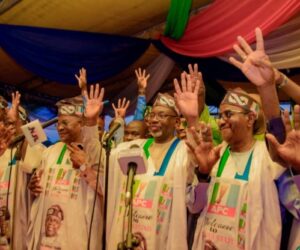Despite the African Continental Free Trade Area’s (AfCFTA) promise to unify Africa’s trade and payments landscape, financial institutions still see “limited” impact. Yet, on a panel at the Africa Financial Summit in Casablanca on Tuesday, leaders behind the Pan-African Payment and Settlement System (PAPSS) and African Exchanges Linkage Project (AELP) argued that new infrastructure could unlock long-awaited momentum if regulators and banks align.
The AfCFTA, established in 2018 and operational since January 1, 2021, was meant to transform how money and markets move across Africa. Its partners, PAPSS, launched in January 2022 to enable payments in local currencies, and AELP, introduced around 2019 to link stock exchanges across the continent, were built to make that promise real. But five years in, their impact has been underwhelming.
A new Deloitte–AFIS Barometer shows that only 18% of African financial executives expect “transformational impact” from these initiatives, while most predict merely “limited” progress. Behind the scepticism lie familiar concerns: regulatory fragmentation, weak digital infrastructure, and the volatility of local currencies that few banks are willing to trade without hedging.
John Bosco Sebabi, Deputy CEO of PAPSS, acknowledged this head-on: “Different countries in Africa have different approaches. When you look at cross-border payments, for example, they are embedded with several challenges. And then you have the challenge of access, because we have a tiered approach. We have central banks, commercial banks, and also the fintechs integrated already.”
Still, PAPSS is pushing into new territory. Sebabi said the Africa Currency Marketplace, launched in June, will improve currency convertibility. “We’re seeing strong momentum with a significant uptick in insurance companies becoming more than just insurers,” he said. “The value lies in economies of scale and network effects; institutions retain value locally without requiring physical movement of money across borders.”
Those remarks resonated across the panel, where speakers agreed that integration is moving, but not yet transforming.
Lina Tonui, AELP’s project director, said the project has expanded its cross-listing system to seven participating exchanges, including Nigeria, Kenya, and Morocco.
“I think the capital that controls the different markets should not be prohibitive,” she said. “Even though everybody’s trying to protect their currency, I think it should still be open enough to bring in investors. All markets should be able to bring in people, and also ensure that even with small markets unable to get as much value, they should be able to diversify to other markets.”
Tonui’s sentiment highlights a foundational challenge for Africa’s capital markets: even as technical connections and cross-listing infrastructure are being built, meaningful integration requires a rethink of how markets balance the drive to protect local currencies with the imperative to welcome investors.
Bassem Gharsalli, Vice President for North Africa at Mastercard, said the lesson from digital payments is that integration only scales when regulators let innovation lead. He argued the continent’s $1.5 trillion digital payments opportunity hinges on shifting away from cash and supporting frictionless, transparent digital trade.
“I think we are still missing the opportunity in terms of intra-Africa trade when we see the big opportunity for Africa,” he said. “What we know is that when digital payment is growing, we see less friction and more transparency.”
For Brahim Benjelloun Touimi, Chairman of the Casablanca Stock Exchange, the issue is structural. “The very concrete operational challenges where the fact that indeed we have multiple languages, multiple time zones, different trading calendars,” he said. “There’s also the lack of a shared free change reference rate. There’s also the specific fragmentation.” His argument echoed investors’ view of Africa’s markets as promising but administratively disconnected.
The contrast between vision and execution has grown sharper as AfCFTA moves from trade policy to financial reality. According to the United Nations Economic Commission for Africa, intra-African trade represented just 16% of the continent’s total trade in 2024, up only slightly from about 15% in 2019, a figure that underscores how slowly cross-border economic ties are deepening.
PAPSS and AELP are designed to change that, but their success depends on trust in systems and currencies. While PAPSS operates across 19 central banks, four fintechs, and 14 payment switching companies, according to Sebabi, major markets like South Africa have yet to officially join the network. Financial institutions remain wary of volatility and counterparty risk when settling in local currencies, especially without robust hedging instruments or clear prudential frameworks.
“We have to have a predictability of the exchange regime,” Touimi added. “We have to have hedging tools for currencies. We have to have financial products that are settled in local currency. We should install a predictable settlement through the delivery versus payments and use these regional rails.”
That is why the Africa Currency Marketplace, if executed well, could mark a turning point. It would, in principle, allow banks and businesses to price and trade African currencies directly and build the confidence that’s missing from intra-African settlements. But the project’s success will depend on how fast regulators harmonise their rules on capital controls, forex transparency, and anti-money-laundering compliance.
“The biggest challenge with alignment should be around regulation,” Sebabi added. “All regulators, capital markets, and central banks are regulating the players at once without harmonisation. Once this is done, we can unlock real cross-border capital flows.”








